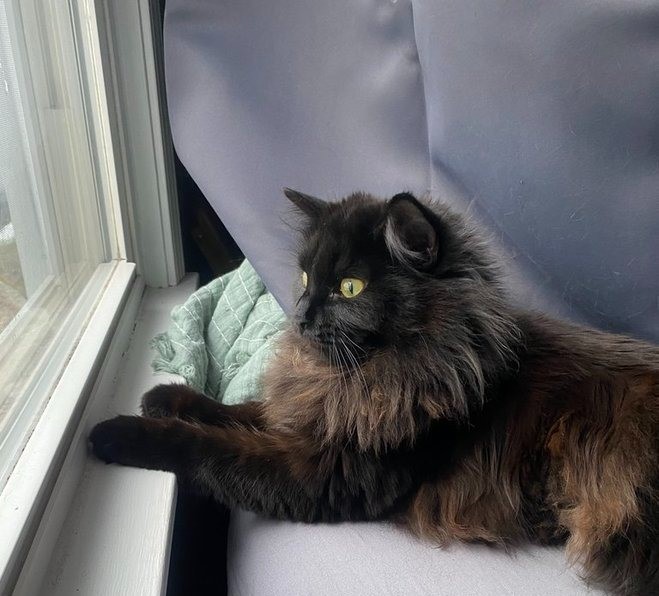
There are affiliate links in this article.
I’ve always had a soft spot for extra furry cats. I love how poofy and fluffy they can be! Aesthetically, I just find them absolutely adorable. Yet, I knew it wasn’t a good idea to choose a cat or a kitten based off looks alone – so I did some research before deciding if a domestic longhair kitten was right for me.
We’ve had our domestic longhair kitten for about 7.5 months now, and getting her is one of the favorite decisions we’ve ever made. Still, longhaired cats are definitely not for everyone! I thought I’d share the information that I learned when researching this myself, and what I’ve learned while owning our kitty Pepperoni.
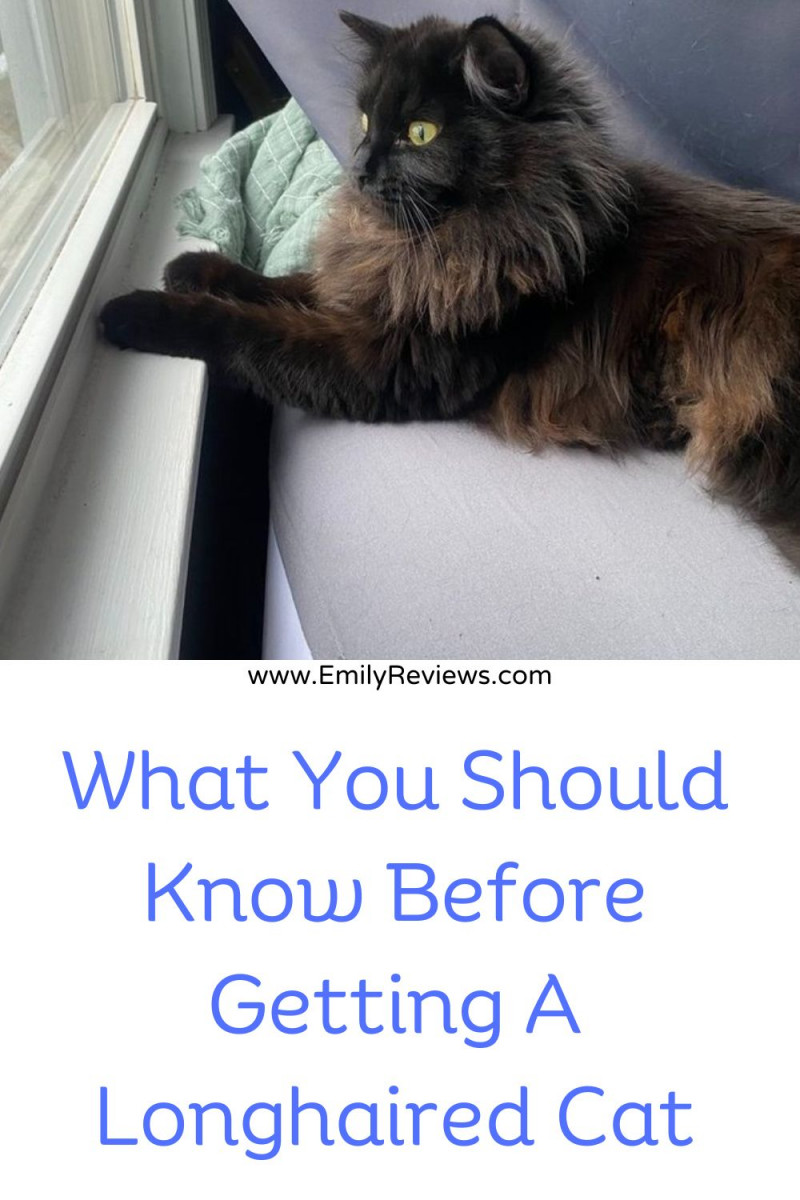
How Much Do Longhaired Cats Shed?
A lot! I have one domestic longhair cat, no dogs or other pets. If we skip a single day of vacuuming, there will be tumbleweeds of hairballs on our carpet. For us, we saw almost no hair shed until she was about 6 months old. Around this age, cats switch from kitten fur to cat fur – and since then she’s been a “shedaholic”!
Extra Needs That Longhaired Cats Have
Longhaired cats have all the same needs as shorthaired cats, plus some additional ones. Those include:
They need brushed regularly. Exactly how often can vary depending on how long your cat’s hair is, how prone it is to matting, and how well they groom themselves. I have seen some people online say they have to brush their cat daily to avoid matting. My cat is able to groom herself really well, and the only place she gets mats are on the side of her face. She has really long hair on the sides of her face, and she’s unable to groom them because they’re too close to her mouth of course. So those are the two areas where she will get mats if we don’t brush her. Brushing once or twice a week seems to be enough for her to avoid mats. That’s what we were doing before she got her adult fur in.
Since she got her adult fur in and started shedding more often, we like to brush her at least every other day to help cut down on how much loose fur ends up on our carpet and otherwise in our home.
They may require sanitary grooming regularly. The other main care need that longhaired cats can have, is a need for sanitary grooming. They may get urine or feces stuck in their fur if their fur is too long around those parts of their body. Our kitten doesn’t have any issues with urine getting in her fur, but “number 2” is a problem. As a result, we have her get a sanitary groom at the groomers. It’s really fast, and they only charge $6 so it’s quite affordable. Prior to getting her, I had read that a lot of cat owners use scissors to trim their own cats backside. We did this a few times, but she’d still get feces in her fur so we decided to try the experts. I’m glad I did, because since then I’ve learned that it is fairly common for pet owners to accidentally injury their cats when they try to cut their hair with scissors. Scared cats may try to back up or sit down while you have scissors near their backside, and they can puncture themselves in those sensitive areas and require surgery. Not worth the risk! So, if you decide to take care of this at home, use a shaver rather than scissors.
Do Longhaired Cats Get Hairballs More Frequently?
Longhaired cats can get hairballs more easily because their hairs are longer, and take up more space in the stomach. To date, Pepperoni has only had one hairball but we try to give her hairball cat treats every few days. I can’t really say if they have helped reduce them or not, but I figure it can’t hurt to try. Also, brushing to remove excess fur can result in the cat getting less in their belly when they groom themselves.
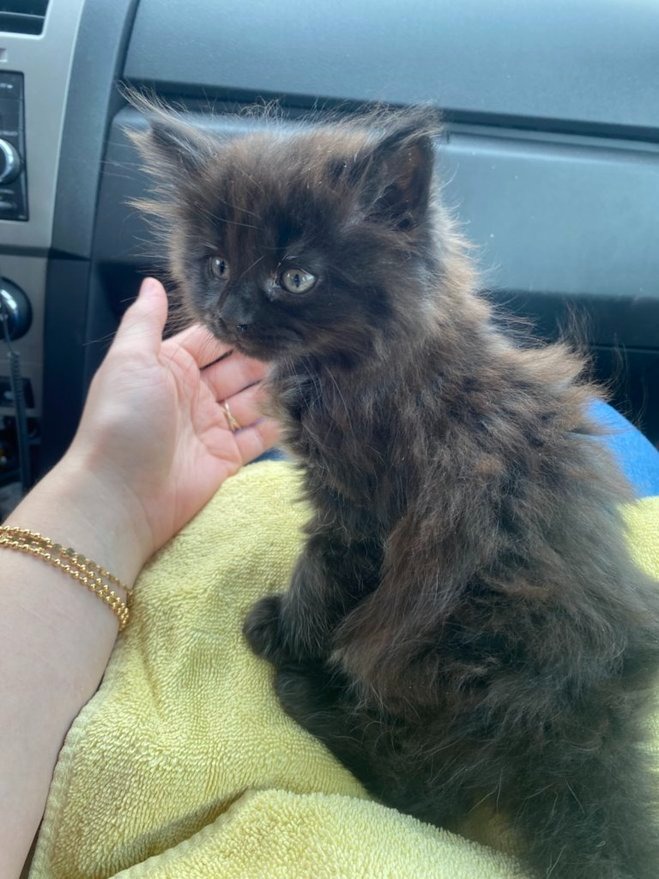
My domestic longhair kitten at about 8 weeks old.
Are Longhaired Cats Worse For Allergy Sufferers?
It’s commonly said that people who are allergic to cats will have extreme reactions to longhaired cats. This is not true. Cats generally have about the same amount of Fel d 1, which is the protein that some humans are allergic to, and it is released in cat saliva skin cells and urine. Cats of different hair lengths (and hair colors) have similar amounts of Fel d 1 so people will have similar allergic responses to long or short-haired cats. It makes no meaningful difference.
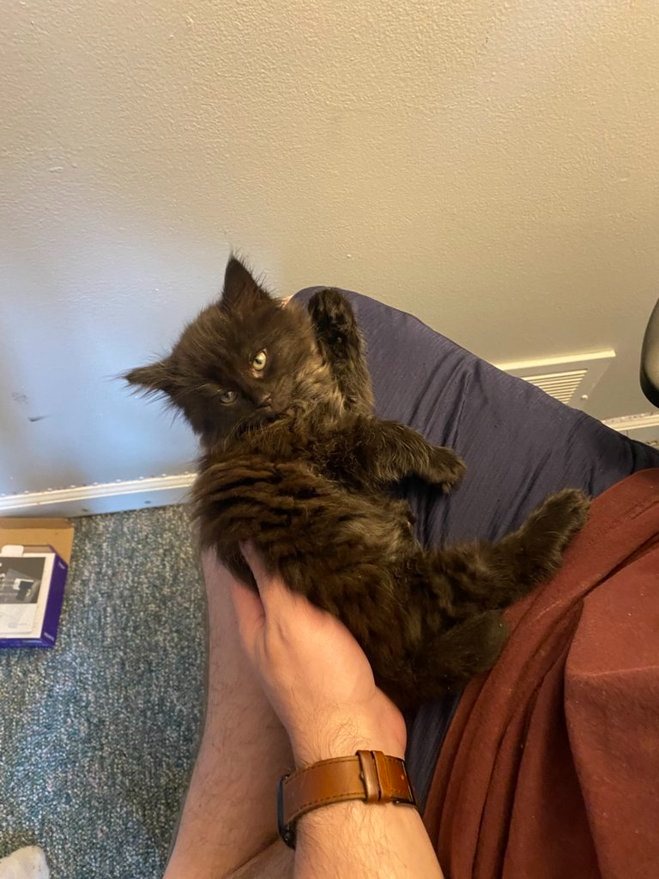
My longhair kitten at 2-3 months old.
Signs that a small kitten will be longhaired
When kittens are small (prior to 6 months or so) they often seem quite fuzzy. It’s common for people to get small, fluffy kitten and think it will be longhaired in an adult, but then it doesn’t. Even when comparing kittens of the same age, one being notably fluffier/fuzzier than the others at 10 weeks old doesn’t mean that one will definitely be long-haired. To a small degree at least, the only way to know for sure is to see what happens once kittens get their adult cat coat at around 6 months of age.
However, there are two common signs that suggest a kitten really will be longhaired, and isn’t just fluffy from kitten fuzz! Kittens that will be longhaired often have long tufts of hair in the paw pads as kittens. Kittens that will be longhaired often have really long ear hair as well. So, if you have a younger kitten with long tufts of fur between its toes and in its ears, it’s more likely to be a longhaired cat once it grows up.
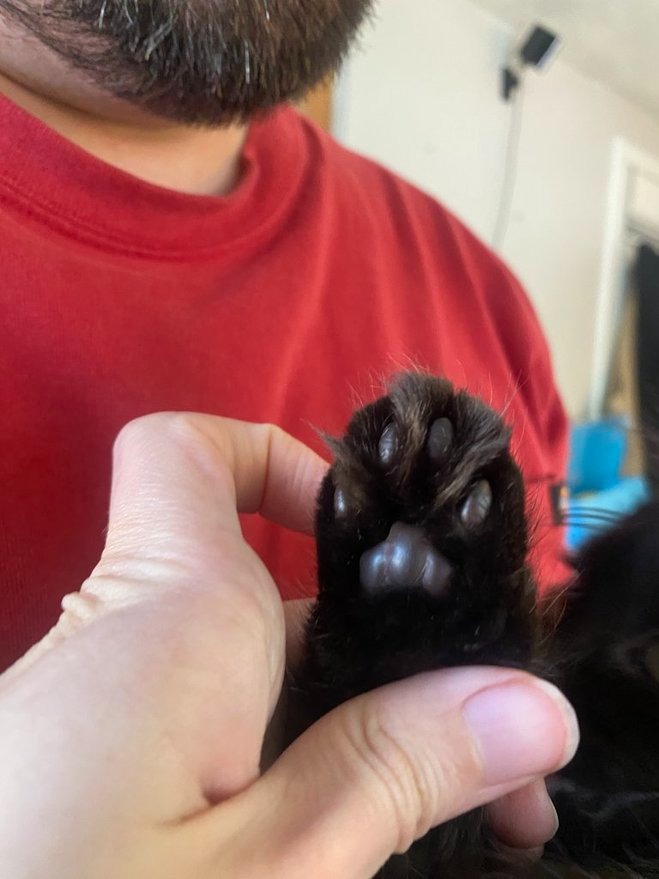
My longhair kitten’s toe fur at around 3 months old
Best types of brushes for longhaired cats
You’ll likely want a few different brushes for your longhaired cat. Slicker brushes are great for routine use to help prevent matting. These brushes will provide some deshedding, but not as much as brushes designed for deshedding.
For deshedding, combs like this are popular in general and are my favorite. Prior to buying one, I thought a comb seemed odd and wasn’t likely to be as effective as a brush. However, I prefer it over the brushes we own. It does a great job of removing loose fur. I believe the ‘teeth’ of the comb having two lengths is key. Prior to finding the comb, we used a slicker brush and it worked almost as well as the comb for deshedding so it would be my #2 suggestion.
Some people like furminator style brushes for their domestic longhair cats. I found that furminator brushes used to sometimes scratch my dogs’ skin so I tend to avoid them personally. If your cat isn’t a fan of traditional brushes, these deshedding gloves are tolerated better by some cats because you can basically just pet them while wearing the glove. My mother-in-law has a nervous cat that does best with the glove style brushing. We have a mit like this, and it doesn’t work as well as our comb does so I don’t use it. If your cat dislikes combs or brushes but will tolerate the glover though, it could be a win.
If you ever experience matting, these dematting rakes are designed to work through mats. Thankfully, we haven’t had to use them yet but I have one on hand just in case.
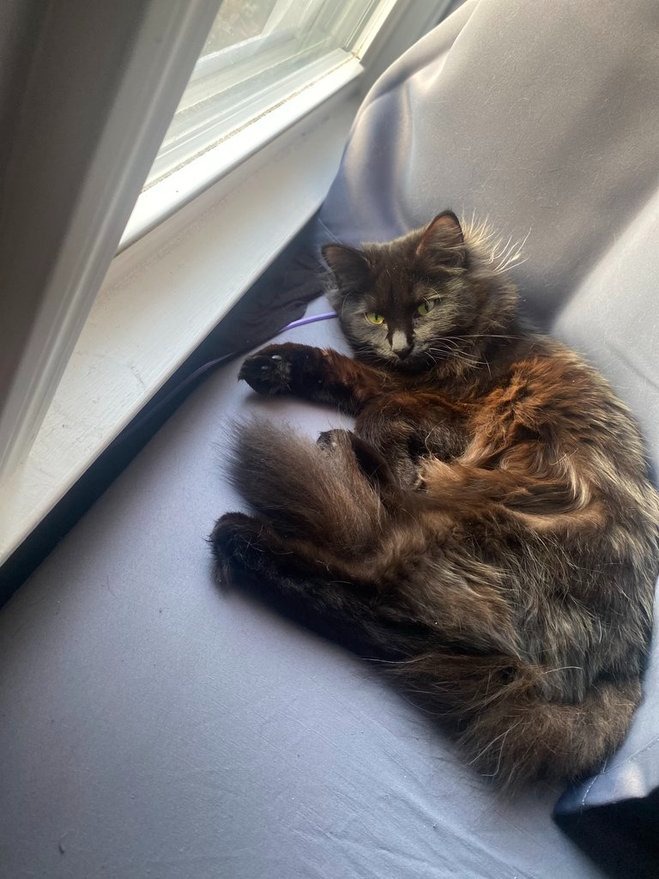
My longhair kitten at about 8 months old. Since then, she’s gotten much longer hair around her neck, giving her more of a “mane” than she had at this age.
Pros and Cons of Longhair Cats
The pros of longhaired cats
- Longhaired cats are beautiful!
- Longhaired cats are usually very soft and fluffy, making the experience of petting them extra enjoyable.
- Grooming can be a nice bonding experience for cats and their owners.
- If you live in a colder climate, the cat will stay more comfortable thanks to their extra fur.
The cons of longhaired cats
- They shed a lot, and their fur is long so it takes up more space.
- They require more grooming which makes them a little more expensive to own than shorthaired cats.
- If you live in a hot climate, longhaired cats will overheat easier in warmer temperatures.
- Longhaired cats are more likely to get debris in their fur.
- Longhaired cats are more prone to hairballs than shorthaired cats.

Hi there! I am Emily Evert, the owner of Emily Reviews. I am 28 and live in a small town in Michigan with my boyfriend Ryan and our two pugs. I have a large family and I adore my nieces and nephews. I love reading memoirs, and learning about child development and psychology. I love watching The Game of Thrones, Teen Mom, Sister Wives and Veep. I like listening to Jason Isbell, John Prine, and other alt-country or Americana music. I created Emily Reviews as a creative outlet to share my life and the products that I love with others.
This post currently has 6 responses.
-
One of our cats is a medium long hair so this information is so helpful.
-
That is a beautiful cat. My daughter has 2 cats, not long haired but they do shed a lot. These are some great tips!
-
Pepperoni is a darling. Looks like she has lots of personality. I have 3 cats and I have to brush consistently. Finding a good brush that they like has been important.
-
I love you researched before just going out and getting a cat. I have four cats, two are medium/long haired. Church, was EXTRA floofy as a baby. her momma is Ragdoll and her dad is Mainecoon. she turned out to be more medium hair with extra extra loon shoulder hairs. its funny.
-
I’d love to have another cat someday. Right now I have 2 dogs
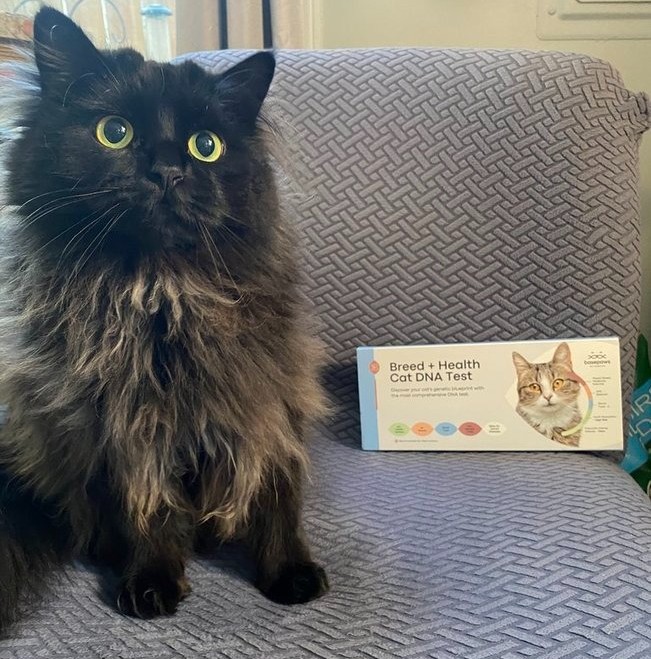
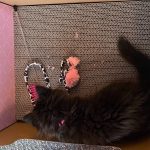
















Pepperoni is beautiful! Of all the cats I’ve had, only two were longhaired, and they did seem to have an increased risk of hairballs if I didn’t brush them regularly. But even shorthaired cats shed a lot, so vacuuming floors and furniture as well as sticky-brushing clothing is a must regardless. We’re currently catless, although we’ve heard one yowling under the windows so that may change soon (fingers crossed!)